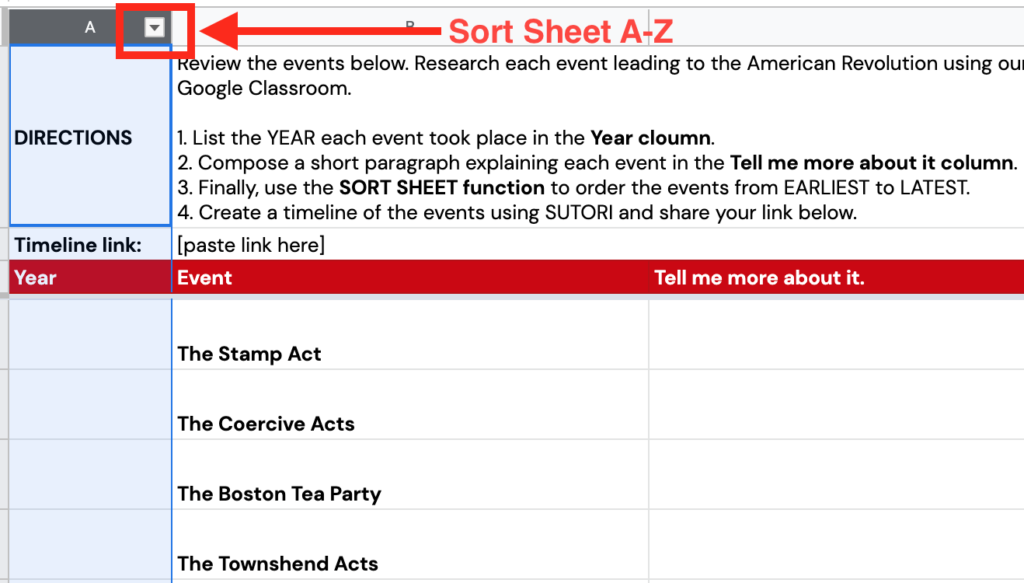-
25
Mar

Well into week 2 of the COVID-19 pandemic, I was looking for another GDocs template-like idea I could build to share with my students on my *newish L🎙ve from the Basement class livestream on Twitch.tv. The last graphic organizer activity went over as well as it could with a bunch of 20-something college students, so I figured why not give it another go?
One web-based tool I have been using for for a year or more is Sutori. I love this site! This is a great site for creating interactive timelines and stories. The interface is clean, it is easy to build a timeline-based story, and it easily integrates a number of digital media types. There is a free version and a paid version. As we see in many of these tools, there are quite a few enhanced features that are not available in the free version, but we soldier on and hope for a day when all web tools are free for educational purposes!
I had recently suggested Sutori to a buddy who I taught with back in my Green Local School days. He explained to me that he was teaching his son about the different types of Air Jordans and they were looking at when each style was released. I jokingly said, “you should have him build a timeline with Sutori,” but here we are…
So with Sutori and GDocs fresh on the brain, I set to work scheming on what we could get done in a format that could be pushed down to students via Google Classroom. For this activity, I selected Google Sheets to develop the graphic organizer. I really like the SORT SHEET feature it offers on each column, and I think this is a great way to start teaching kids about the power of spreadsheets and how they can be used to sort, filter and order data.
To get started, I selected the content I wanted students to interact with and then finding an online text at the appropriate reading level. From there, I pulled main events from the online text to use in my GSheets template. I created a sheet for the KEY first, then made a DUPLICATE of that sheet and then filled it out with DIRECTIONS and other key features. Of course, when the students get this template, the KEY sheet would be removed.
You can view a template I created using the link below. I selected events leading to the American Revolution for this example, but the template can easily be adapted for other subject areas. Feel free to make a copy and adapt for your needs.
American Revolution Graphic Organizer
The key features of this GSheets graphic organizer and their alignment with Ohio’s Learning Standards/Strand/Topic include:
- Record the YEAR each event took place in the Year column.
- Social Studies/History/Historical Thinking and Skills
- ELA/Reading Informational Text/Key Ideas and Details
- Compose a short paragraph explaining each event in the Tell me more about it column.
- Social Studies/History/Colonization to Independence
- ELA/Reading Informational Text/Key Ideas and Details
- ELA/Writing/Research to Build and Present Knowledge
- Use the SORT SHEET function to order the events from EARLIEST to LATEST.
- Social Studies/History/Historical Thinking and Skills
- Technology/Information & Communication Technology/Topics 1-4
- Create a timeline of the events using SUTORI and share your link below.
- Social Studies/History/Historical Thinking and Skills
- ELA/Writing/Production and Distribution of Writing
- ELA/Writing/Research to Build and Present Knowledge
- Technology/Information & Communication Technology/Topics 1-4
Here’s a link to a sample timeline on Sutori.
Because my own students are pre-service educators, I see all licensure bands and content areas in my classes. To try to show how this activity could be adapted for an online Fine Arts class, I created another sample template to use as an example.
2-D Perspective Drawing Graphic Organizer
The video below takes you through the creation process with some other suggestions for implementing in the online environment. I apologize for the small desktop view! I did not select the proper settings in OBS during my livestream. Hopefully you get the idea and take it run!
- Published by brueckj23 in: Ed Prep Teacher Education University of Mount Union
- If you like this blog please take a second from your precious time and subscribe to my rss feed!

Leave a Reply